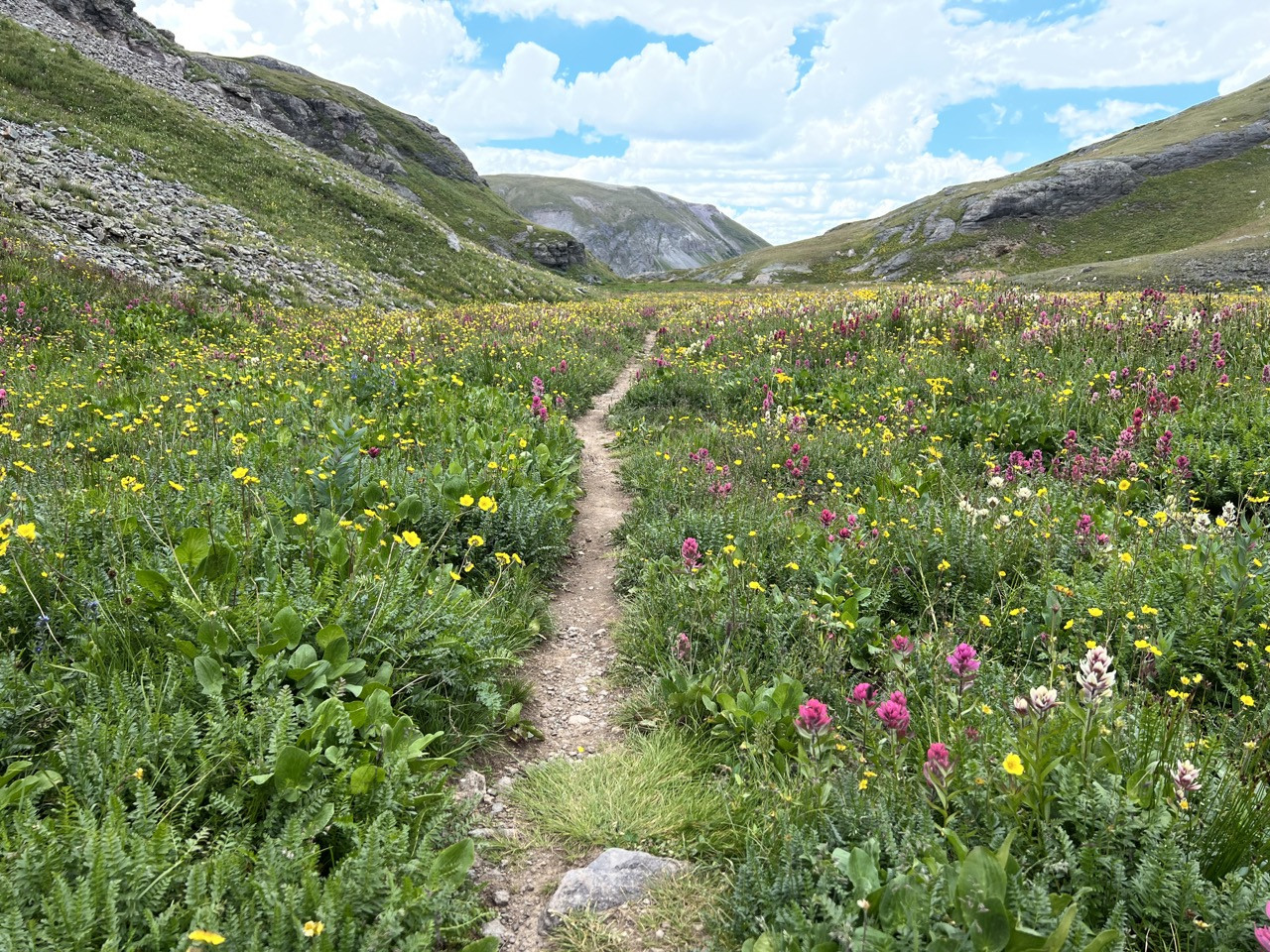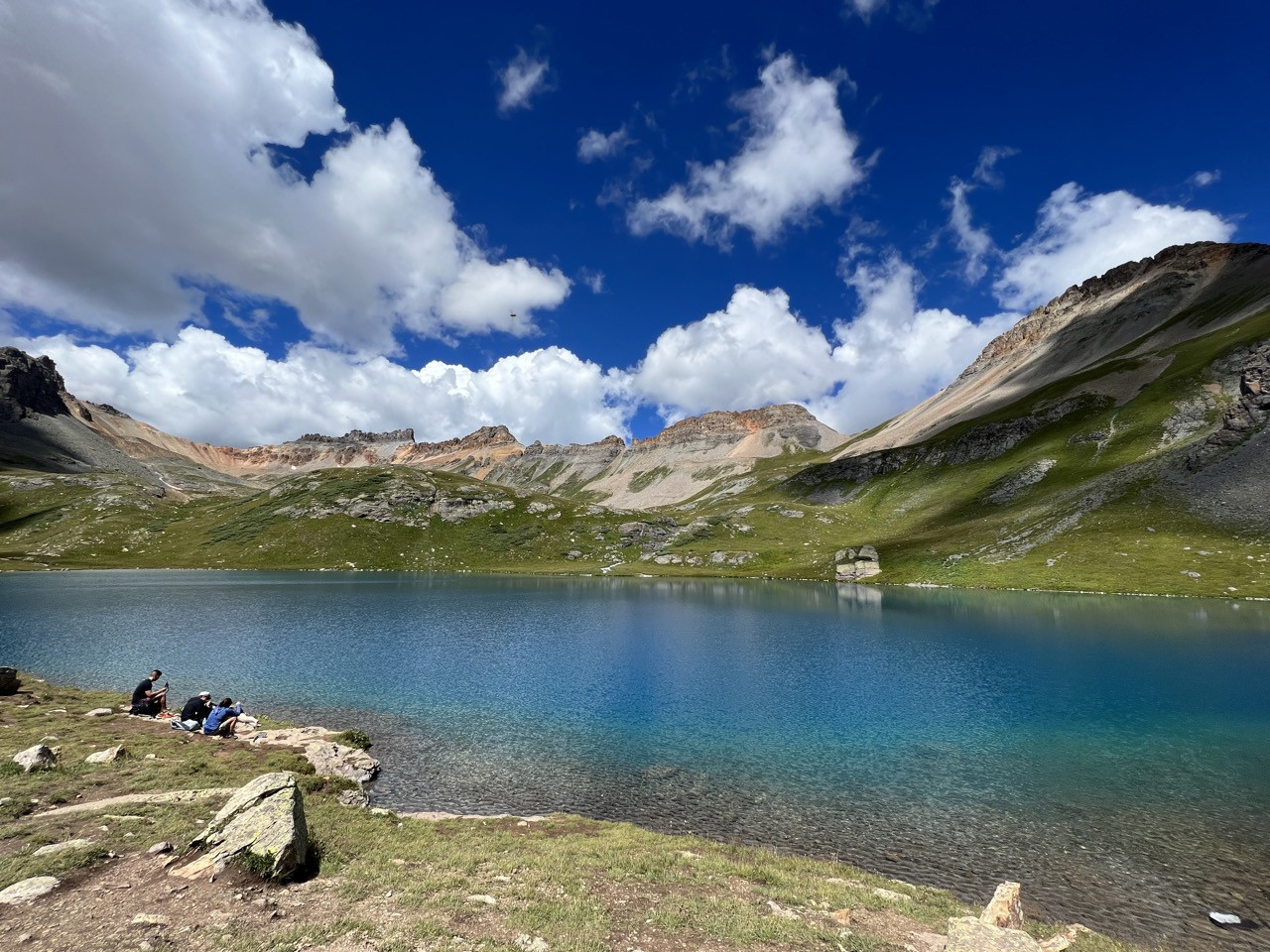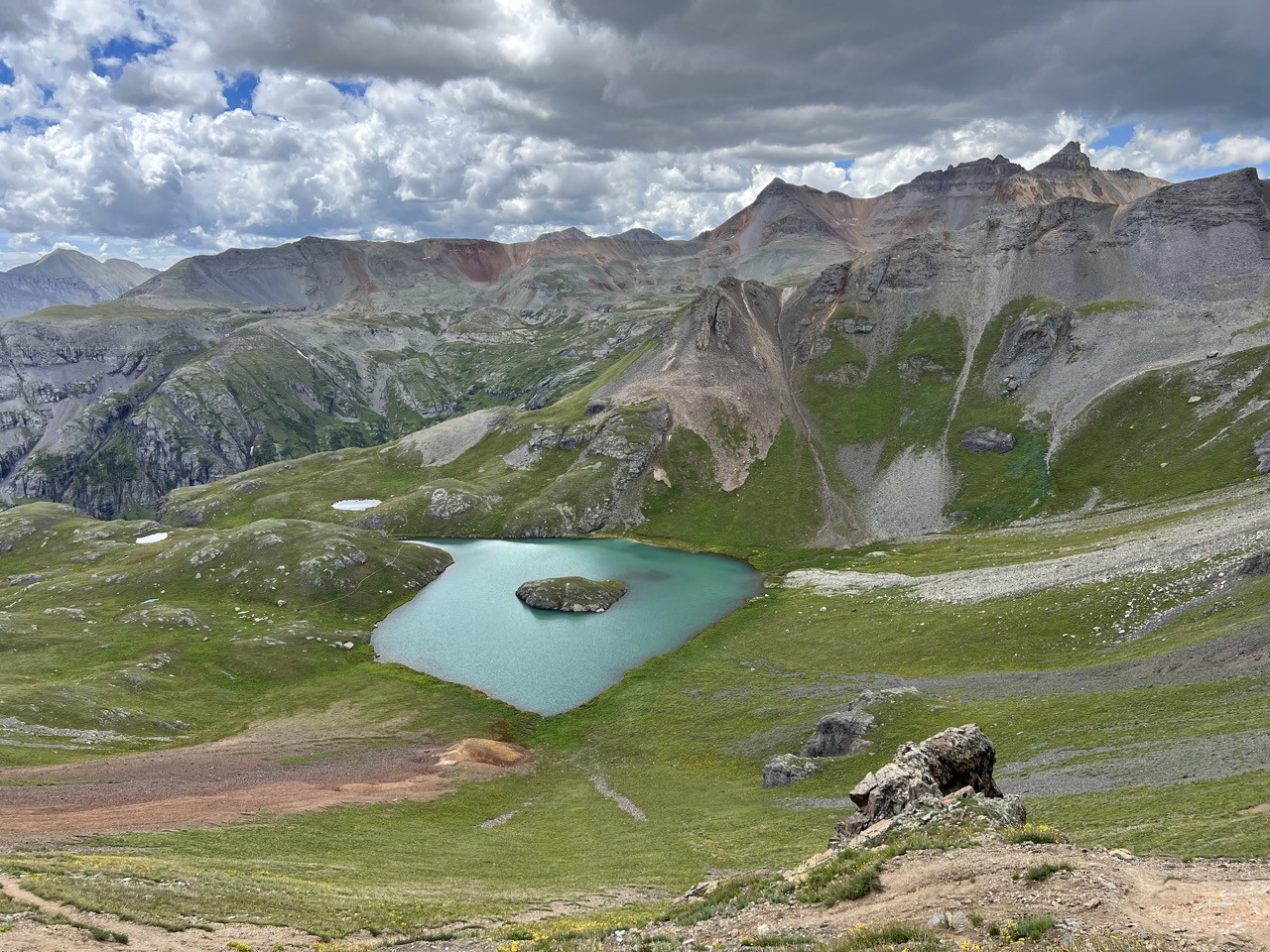Soft rock in landscaping refers to a category of rocks that are less dense and more easily shaped than harder varieties like granite or basalt. At rockscapes.net, we help you explore the world of soft rock and how it enhances your landscape with texture, color, and natural beauty. Let’s dive into understanding what soft rock truly is, how it’s used, and why it might be the perfect addition to your outdoor space, complete with landscaping stones, rock gardens, and decorative gravel.
2. Defining Soft Rock: What Makes A Rock “Soft?”
Soft rock isn’t just about how it feels to the touch, but more about its composition and how it interacts with the elements. It is most easily defined by what it is not, namely igneous or metamorphic rock. The term encompasses a wide range of sedimentary and some metamorphic rocks that are less resistant to weathering and erosion than their harder counterparts. These rocks are often favored in landscaping for their aesthetic appeal, workability, and ability to blend harmoniously with plant life.
2.1. Composition and Characteristics
What gives a rock its “soft” designation? Several factors come into play:
-
Mineral Content: Soft rocks often contain minerals like calcite, gypsum, or shale, which are softer on the Mohs hardness scale compared to quartz or feldspar found in harder rocks.
-
Porosity: These rocks tend to be more porous, meaning they have more open spaces within their structure. This allows them to absorb water more readily, which can contribute to faster weathering.
-
Layered Structure: Many soft rocks, especially sedimentary types like sandstone or shale, have a layered structure that makes them easier to split and shape.
 Sandstone rock formation with layered structure
Sandstone rock formation with layered structure
Alt text: Close-up of layered sandstone formation showcasing the distinct stratification and sedimentary composition.
2.2. Examples of Common Soft Rocks
Here are some of the most popular types of soft rocks used in landscaping:
-
Sandstone: Composed of sand grains cemented together, sandstone comes in various colors and is prized for its warm, natural look. It’s relatively easy to cut and shape, making it ideal for paving stones, retaining walls, and decorative features.
-
Limestone: Primarily made of calcium carbonate, limestone has a light color and a slightly porous texture. It’s commonly used for garden borders, pathways, and as a base material for gravel driveways.
-
Slate: A fine-grained metamorphic rock derived from shale, slate is known for its distinct layering and ability to be split into thin, flat sheets. It’s a popular choice for paving, roofing, and decorative wall cladding.
-
Shale: A sedimentary rock formed from compacted clay and mud, shale is characterized by its fine-grained texture and tendency to break into thin layers. It’s often used as a base material for pathways or as a decorative mulch in garden beds.
-
Travertine: A type of limestone formed around mineral springs, travertine has a porous texture and a characteristic pitted surface. It’s often used for paving, wall cladding, and water features, adding a touch of elegance to outdoor spaces.
-
Soapstone: A metamorphic rock composed primarily of talc, soapstone is exceptionally soft and smooth to the touch. It’s heat-resistant and non-porous, making it a good choice for fireplace surrounds, countertops, and even outdoor sculptures.
2.3. Hardness Scale and Soft Rock
The Mohs hardness scale, developed by German mineralogist Friedrich Mohs in 1812, ranks minerals based on their scratch resistance. The scale ranges from 1 (talc, the softest) to 10 (diamond, the hardest). Soft rocks typically fall within the lower end of this scale:
- Gypsum: 2
- Calcite: 3
- Fluorite: 4
These minerals are commonly found in soft rocks, making them more susceptible to weathering and erosion compared to rocks containing harder minerals like quartz (7) or topaz (8). This inherent softness is one of the key reasons why soft rocks are easier to work with in landscaping projects.
3. Why Choose Soft Rock for Your Landscape?
Soft rocks offer a unique combination of aesthetic appeal, practicality, and environmental benefits that make them a popular choice for landscaping projects of all sizes. From creating inviting pathways to constructing stunning rock gardens, soft rocks can transform your outdoor space into a haven of natural beauty.
3.1. Aesthetic Versatility
Soft rocks come in a wide range of colors, textures, and shapes, allowing you to create a variety of visual effects in your landscape.
-
Color Palette: Sandstone can range from creamy whites and yellows to warm reds and browns, while limestone offers subtle shades of gray and beige. Slate provides a sophisticated touch with its dark grays and blacks, and travertine adds a touch of Mediterranean flair with its light, creamy tones.
-
Texture: Soft rocks can have smooth, weathered surfaces or rough, jagged edges, depending on the type and how they’ve been обработаны. This textural diversity adds visual interest and depth to your landscape.
-
Shapes: Soft rocks can be easily shaped and carved to create custom features such as benches, sculptures, and water features. Their workability allows for intricate designs and personalized touches that reflect your unique style.
3.2. Ease of Use and Workability
Compared to harder rocks like granite or basalt, soft rocks are much easier to cut, shape, and install. This makes them a popular choice for DIY projects and professional landscaping alike.
-
Cutting and Shaping: Soft rocks can be cut with basic tools like saws and chisels, allowing you to create custom shapes and sizes for your specific needs.
-
Installation: Their relatively light weight makes soft rocks easier to handle and transport, reducing the physical strain involved in installation.
-
DIY Friendliness: Soft rocks are an excellent choice for DIY landscaping projects, as their workability allows you to create stunning features without requiring specialized equipment or skills.
3.3. Environmental Benefits
Using soft rocks in your landscape can contribute to a more sustainable and eco-friendly environment.
-
Local Sourcing: Soft rocks are often sourced locally, reducing transportation costs and carbon emissions associated with long-distance shipping.
-
Permeability: The porous nature of many soft rocks allows water to filter through them, reducing runoff and promoting groundwater recharge.
-
Habitat Creation: Soft rocks can provide shelter and habitat for beneficial insects, reptiles, and amphibians, enhancing the biodiversity of your landscape.
-
Erosion Control: Soft rocks can be used to stabilize slopes and prevent soil erosion, protecting your property and the surrounding environment.
3.4. Cost-Effectiveness
In many regions, soft rocks are more readily available and less expensive than harder varieties. This can make them a cost-effective choice for large-scale landscaping projects.
-
Material Costs: Depending on your location, soft rocks like sandstone or limestone may be significantly cheaper than granite or basalt.
-
Installation Costs: The ease of working with soft rocks can reduce labor costs associated with installation, making them an even more budget-friendly option.
-
Long-Term Value: Soft rocks can add lasting value to your property by enhancing its aesthetic appeal and functionality.
4. Landscaping Ideas Using Soft Rock
Soft rock is incredibly versatile and can be incorporated into a wide range of landscaping designs. Here are some creative ideas to inspire your next outdoor project:
4.1. Rock Gardens
Create a stunning focal point by arranging various types of soft rock in a naturalistic setting. Combine different colors, textures, and sizes to mimic the look of a mountain landscape. Add drought-tolerant plants like succulents, cacti, and ornamental grasses to complete the scene.
-
Sandstone Outcroppings: Use large sandstone boulders to create dramatic outcroppings, adding height and visual interest to your rock garden.
-
Limestone Pathways: Incorporate limestone stepping stones to create winding pathways through your rock garden, inviting visitors to explore its beauty.
-
Slate Accents: Add slate chips or slabs as ground cover to suppress weeds and enhance the overall aesthetic appeal of your rock garden.
4.2. Pathways and Walkways
Soft rock is an excellent choice for creating inviting pathways and walkways.
-
Sandstone Pavers: Use sandstone pavers to create a warm and welcoming walkway that complements your home’s architecture.
-
Limestone Gravel: Create a rustic pathway using crushed limestone gravel, providing a comfortable and stable surface for walking.
-
Slate Stepping Stones: Arrange slate stepping stones in a staggered pattern to create a whimsical and natural-looking pathway through your garden.
4.3. Retaining Walls
Build sturdy and aesthetically pleasing retaining walls using soft rock.
-
Sandstone Walls: Construct retaining walls using large sandstone blocks, providing a natural and durable solution for managing slopes.
-
Limestone Boulders: Use limestone boulders to create a terraced retaining wall, adding visual interest and creating planting pockets for flowers and shrubs.
-
Dry-Stacked Walls: Build a dry-stacked retaining wall using soft rock, allowing water to drain freely and creating a natural habitat for plants and animals.
4.4. Water Features
Incorporate soft rock into water features to create a tranquil and inviting atmosphere.
-
Sandstone Waterfalls: Create a cascading waterfall using sandstone slabs, adding the soothing sound of flowing water to your landscape.
-
Limestone Ponds: Line the edges of a pond with limestone rocks, creating a natural-looking border and providing habitat for aquatic plants and animals.
-
Travertine Fountains: Install a travertine fountain as a focal point in your garden, adding a touch of elegance and sophistication.
4.5. Garden Borders and Edging
Use soft rock to define garden beds and create clean, crisp edges.
-
Sandstone Edging: Line your garden beds with sandstone blocks or pavers, creating a neat and defined border that separates planting areas from lawns or pathways.
-
Limestone Rocks: Use small limestone rocks to create a natural-looking edging around your flower beds, adding a touch of rustic charm to your landscape.
-
Slate Chips: Spread slate chips along the edges of your garden beds to suppress weeds and create a visually appealing border.
 Rock garden with various soft rocks and succulents
Rock garden with various soft rocks and succulents
Alt text: A vibrant rock garden featuring a diverse selection of soft rocks complemented by colorful succulents and drought-resistant plants.
5. Choosing the Right Soft Rock for Your Project
With so many types of soft rock available, it’s essential to choose the right one for your specific project. Consider the following factors when making your selection:
5.1. Climate and Weather Conditions
Different types of soft rock have varying degrees of resistance to weathering and erosion.
-
Freeze-Thaw Cycles: In areas with harsh winters, choose soft rocks that are resistant to freeze-thaw cycles, such as certain types of sandstone and limestone.
-
Rainfall: In areas with high rainfall, opt for soft rocks that are less porous and can withstand prolonged exposure to moisture.
-
Sun Exposure: Darker soft rocks like slate can absorb more heat, so consider lighter-colored options in areas with intense sun exposure.
5.2. Style and Design Preferences
Choose soft rocks that complement your home’s architecture and your personal style.
-
Rustic Charm: Sandstone and limestone are excellent choices for creating a rustic and natural-looking landscape.
-
Modern Elegance: Slate and travertine can add a touch of modern elegance to your outdoor spaces.
-
Mediterranean Flair: Travertine and other light-colored soft rocks can evoke the warmth and beauty of the Mediterranean.
5.3. Intended Use and Functionality
Consider the intended use of the soft rock and choose a type that is appropriate for the application.
-
Paving: Choose durable and slip-resistant soft rocks like sandstone or slate for paving applications.
-
Retaining Walls: Opt for strong and stable soft rocks like sandstone or limestone for building retaining walls.
-
Water Features: Select soft rocks that are resistant to water damage and algae growth for use in water features.
5.4. Budget Considerations
Soft rock prices can vary depending on the type, size, and availability.
-
Compare Prices: Shop around and compare prices from different suppliers to find the best deal.
-
Consider Local Options: Locally sourced soft rocks are often more affordable than those that need to be transported long distances.
-
DIY vs. Professional Installation: Factor in the cost of professional installation if you’re not comfortable tackling the project yourself.
6. Sourcing Soft Rock in the USA
Finding the right supplier for your soft rock needs is crucial to ensuring the quality and success of your landscaping project. Here are some tips for sourcing soft rock in the USA:
6.1. Local Stone Yards and Quarries
Start by contacting local stone yards and quarries in your area.
- Benefits: They often offer a wide selection of soft rocks and can provide valuable advice on choosing the right type for your project.
- Considerations: Check their reputation and ensure they source their rocks from reputable quarries.
6.2. Landscaping Supply Stores
Landscaping supply stores often carry a variety of soft rocks, especially those commonly used in residential landscaping.
- Benefits: They provide convenience and easy access to a range of landscaping materials.
- Considerations: Their selection may be limited compared to stone yards or quarries, and their prices may be higher.
6.3. Online Retailers
Several online retailers specialize in selling rocks and landscaping materials.
- Benefits: They offer a wide selection and can ship directly to your home.
- Considerations: It’s difficult to assess the quality of the rocks online, and shipping costs can be significant.
6.4. Ask for Recommendations
Ask your friends, neighbors, or local landscaping professionals for recommendations on reputable soft rock suppliers.
- Benefits: Word-of-mouth referrals can provide valuable insights into the quality and service of different suppliers.
- Considerations: Make sure the recommendations are relevant to your specific needs and location.
6.5. Verify Quality and Sustainability
Before purchasing soft rock, verify its quality and ensure it has been sourced sustainably.
- Check for Defects: Inspect the rocks for cracks, chips, or other defects that could compromise their structural integrity.
- Ask About Sourcing: Inquire about the quarry’s environmental practices and ensure they comply with local regulations.
- Look for Certifications: Look for certifications that indicate the rocks have been tested for quality and safety.
7. Installing Soft Rock: Tips and Techniques
Proper installation is essential to ensuring the longevity and beauty of your soft rock landscape. Here are some tips and techniques to help you get the job done right:
7.1. Site Preparation
Prepare the site thoroughly before installing any soft rock.
- Clear Debris: Remove any vegetation, rocks, or other debris from the area.
- Level the Ground: Level the ground to create a smooth and stable base for your soft rock installation.
- Compaction: Compact the soil to prevent settling and ensure the stability of your project.
7.2. Drainage
Ensure proper drainage to prevent water from accumulating around your soft rock installation.
- Grading: Grade the site to direct water away from your home and other structures.
- Drainage Systems: Install drainage systems such as French drains or perforated pipes to remove excess water.
- Permeable Base: Use a permeable base material like gravel or crushed stone to allow water to drain freely.
7.3. Mortar and Adhesives
Use appropriate mortar and adhesives for securing soft rock in place.
- Mortar Mix: Use a high-quality mortar mix that is specifically designed for use with natural stone.
- Adhesives: Use construction adhesives to bond soft rock to vertical surfaces or to create decorative features.
- Follow Instructions: Follow the manufacturer’s instructions carefully when mixing and applying mortar and adhesives.
7.4. Cutting and Shaping
Cut and shape soft rock as needed to fit your design.
- Safety Gear: Wear safety glasses and gloves when cutting or shaping soft rock.
- Cutting Tools: Use appropriate cutting tools such as saws, chisels, and grinders.
- Dust Control: Use a water spray to control dust when cutting or grinding soft rock.
7.5. Placement and Arrangement
Arrange soft rock in a way that is both aesthetically pleasing and functional.
- Natural Look: Mimic natural rock formations by arranging soft rock in a random and organic pattern.
- Stability: Ensure the stability of your soft rock installation by interlocking the rocks and providing a solid base.
- Visual Balance: Create visual balance by distributing different sizes and colors of soft rock throughout your landscape.
 Soft rock retaining wall with terraced planting
Soft rock retaining wall with terraced planting
Alt text: A terraced retaining wall constructed from soft rocks, featuring various levels of planting beds filled with vibrant flowers and foliage.
8. Maintaining Your Soft Rock Landscape
Proper maintenance is crucial to preserving the beauty and longevity of your soft rock landscape. Here are some tips for keeping your soft rocks looking their best:
8.1. Cleaning
Clean soft rocks regularly to remove dirt, debris, and algae.
- Hose Down: Rinse soft rocks with a garden hose to remove loose dirt and debris.
- Mild Detergent: Use a mild detergent and a scrub brush to remove stubborn stains or algae.
- Pressure Washer: Use a pressure washer on a low setting to clean larger areas of soft rock.
8.2. Weed Control
Control weeds around your soft rock installation to prevent them from becoming overgrown.
- Hand Pulling: Pull weeds by hand, being careful not to disturb the soft rocks.
- Herbicides: Use herbicides sparingly, following the manufacturer’s instructions carefully.
- Mulch: Apply mulch around your soft rocks to suppress weed growth.
8.3. Sealing
Seal soft rocks to protect them from staining and weathering.
- Stone Sealers: Use a high-quality stone sealer that is specifically designed for use with natural stone.
- Application: Apply the sealer according to the manufacturer’s instructions, ensuring even coverage.
- Reapplication: Reapply the sealer every few years to maintain its protective properties.
8.4. Repairing
Repair any cracks or chips in soft rocks promptly to prevent further damage.
- Epoxy Fillers: Use epoxy fillers to repair small cracks or chips.
- Mortar Repair: Use mortar to repair larger cracks or to replace damaged sections of soft rock.
- Professional Help: Consult a professional stone mason for more extensive repairs.
8.5. Preventing Staining
Prevent staining by taking precautions to protect soft rocks from spills and other contaminants.
- Sealants: Apply sealants to protect soft rocks from staining.
- Immediate Cleanup: Clean up spills immediately to prevent them from soaking into the stone.
- Protective Mats: Use protective mats under potted plants and other items that could potentially stain soft rocks.
9. Trends in Soft Rock Landscaping in the USA
Stay up-to-date with the latest trends in soft rock landscaping to create a stylish and contemporary outdoor space.
9.1. Naturalistic Designs
Naturalistic designs that mimic natural rock formations are gaining popularity.
- Organic Shapes: Incorporate soft rocks with organic shapes and textures to create a natural-looking landscape.
- Native Plants: Combine soft rocks with native plants to create a sustainable and ecologically friendly landscape.
- Water Features: Add water features to enhance the natural beauty of your soft rock landscape.
9.2. Sustainable Landscaping
Sustainable landscaping practices that minimize environmental impact are becoming increasingly important.
- Permeable Paving: Use permeable soft rocks for paving to reduce runoff and promote groundwater recharge.
- Drought-Tolerant Plants: Incorporate drought-tolerant plants to conserve water and reduce the need for irrigation.
- Local Sourcing: Source soft rocks locally to reduce transportation costs and carbon emissions.
9.3. Xeriscaping
Xeriscaping, a landscaping technique that minimizes water use, is gaining popularity in arid and semi-arid regions of the USA.
- Gravel Mulch: Use gravel mulch made from soft rock to conserve moisture and suppress weed growth.
- Drought-Tolerant Plants: Select drought-tolerant plants that thrive in dry conditions.
- Efficient Irrigation: Use efficient irrigation systems such as drip irrigation to deliver water directly to plant roots.
9.4. Vertical Gardens
Vertical gardens that incorporate soft rock are a creative way to add greenery to small spaces.
- Stacked Stone Walls: Build stacked stone walls using soft rock to create a framework for vertical gardens.
- Pocket Gardens: Create pocket gardens by inserting plants into crevices in soft rock walls.
- Living Walls: Install living walls with soft rock backing to create a stunning vertical display of plants.
9.5. Fire Pits and Outdoor Living Spaces
Fire pits and outdoor living spaces that incorporate soft rock are becoming increasingly popular.
- Stone Fire Pits: Build fire pits using soft rock to create a cozy and inviting outdoor gathering space.
- Stone Patios: Create stone patios using soft rock to provide a durable and aesthetically pleasing surface for outdoor living.
- Outdoor Kitchens: Incorporate soft rock into outdoor kitchens to create a stylish and functional cooking and dining area.
 Landscaping with gravel and river rock
Landscaping with gravel and river rock
Alt text: A contemporary landscape design featuring gravel mulch and river rocks, complemented by ornamental grasses and drought-resistant shrubs.
10. FAQ About Soft Rock
Still have questions about soft rock? Here are some frequently asked questions to help you better understand this versatile landscaping material:
10.1. Is soft rock suitable for all climates?
Some soft rocks are more suitable for certain climates than others. Consider the factors discussed in section 5.1 when choosing soft rock for your project.
10.2. How do I clean soft rock?
Clean soft rock regularly using a hose, mild detergent, and a scrub brush. See section 8.1 for more details.
10.3. How do I prevent weeds from growing in my soft rock landscape?
Prevent weeds by pulling them by hand, using herbicides sparingly, and applying mulch. See section 8.2 for more details.
10.4. Do I need to seal soft rock?
Sealing soft rock can protect it from staining and weathering. See section 8.3 for more details.
10.5. How do I repair cracks or chips in soft rock?
Repair cracks or chips using epoxy fillers or mortar. See section 8.4 for more details.
10.6. Where can I buy soft rock in the USA?
Buy soft rock from local stone yards, landscaping supply stores, or online retailers. See section 6 for more details.
10.7. How much does soft rock cost?
Soft rock prices vary depending on the type, size, and availability. Shop around and compare prices from different suppliers.
10.8. Can I install soft rock myself?
You can install soft rock yourself if you have the necessary skills and tools. See section 7 for installation tips and techniques.
10.9. What are the environmental benefits of using soft rock in landscaping?
Soft rock can be sourced locally, is permeable, can create habitat, and can help control erosion. See section 3.3 for more details.
10.10. What are some popular landscaping ideas using soft rock?
Popular landscaping ideas include rock gardens, pathways, retaining walls, water features, and garden borders. See section 4 for more details.
11. Discover the Beauty of Soft Rock with Rockscapes.net
Ready to transform your landscape with the natural beauty of soft rock? Visit rockscapes.net today to explore a wide range of soft rock options, get inspired by stunning design ideas, and connect with expert landscaping professionals in your area. Our team at Address: 1151 S Forest Ave, Tempe, AZ 85281, United States. Phone: +1 (480) 965-9011, is here to help you create the outdoor oasis of your dreams. Contact us now, or visit rockscapes.net to unlock the potential of your landscape!
